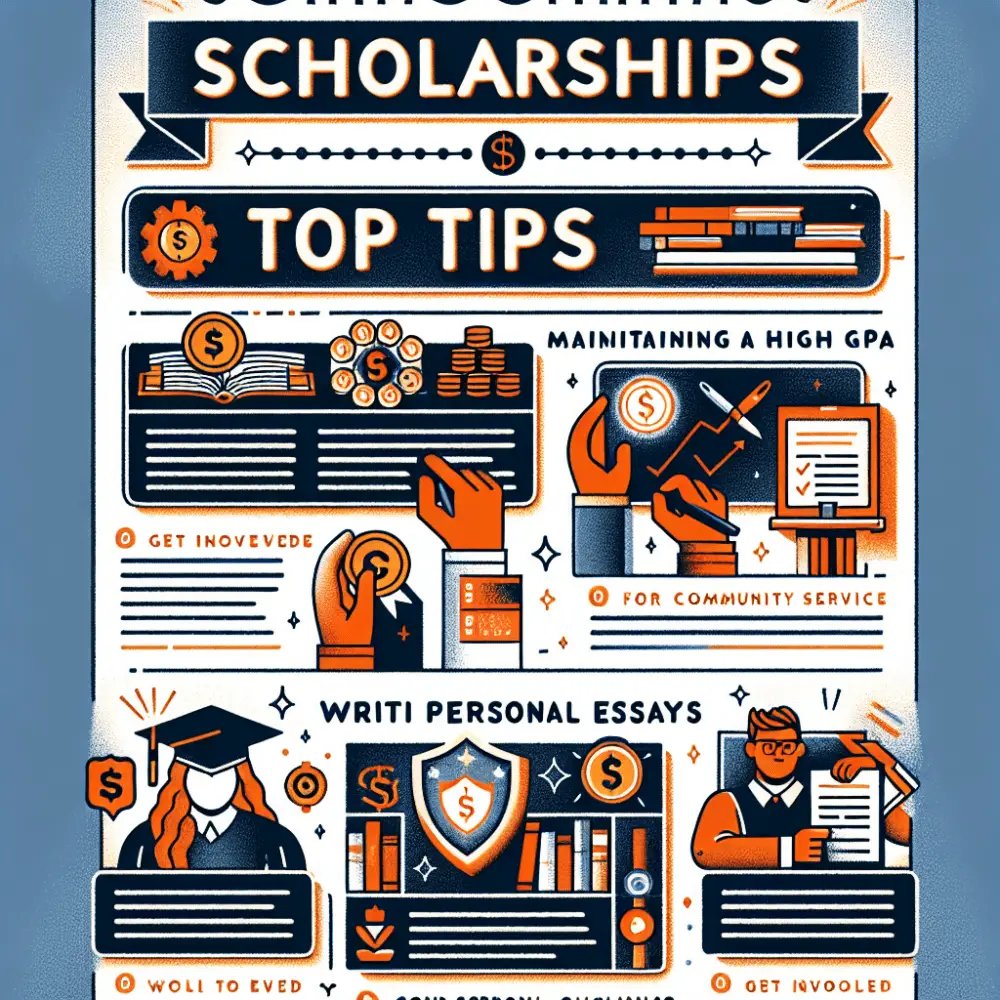
Securing scholarships can be a game-changer when it comes to pursuing higher education. Scholarships not only help alleviate the financial burden of tuition fees, but they also provide recognition and validation for academic achievement. However, the process of securing scholarships can be competitive and overwhelming for many students. That’s why it’s essential to have a solid strategy in place to increase your chances of success. In this article, we will discuss some top tips for securing scholarships that will help you stand out from the crowd and secure the funding you need for your educational aspirations.
Start Early
One of the most important tips for securing scholarships is to start early. Many scholarship applications have deadlines that are months in advance of the actual award date, so it’s crucial to give yourself plenty of time to research and apply for scholarships. Begin your search as soon as possible, ideally during your junior year of high school or even earlier if possible. This will give you more time to identify potential scholarship opportunities, gather all the necessary documents, and perfect your application before submitting it.
Research Thoroughly
Another key tip for securing scholarships is to research thoroughly. There are thousands of scholarship opportunities available, ranging from merit-based scholarships to need-based scholarships to niche scholarships for specific interests or demographics. Take the time to explore all possible options and make a list of scholarships that align with your academic achievements, career goals, personal background, and any other relevant criteria. Use online scholarship search engines, college financial aid offices, community organizations, and professional associations as resources to find potential opportunities that match your profile.
Highlight Your Strengths
When applying for scholarships, it’s essential to highlight your strengths and accomplishments effectively. Most scholarship applications require essays or personal statements where you can showcase your academic achievements, extracurricular activities, leadership roles, community service involvement, career aspirations, and any other relevant experiences that make you a strong candidate for the award. Be sure to tailor each application to the specific requirements of the scholarship and emphasize how you meet or exceed the eligibility criteria.
Request Strong Letters of Recommendation
Letters of recommendation play a vital role in scholarship applications as they provide insight into your character, work ethic, academic abilities, and potential for success in higher education. Choose recommenders who know you well and can speak confidently about your qualifications for the scholarship. Request letters from teachers, counselors, employers, coaches, or mentors who can attest to your strengths and highlight why you deserve the award.
Proofread Your Application
Before submitting any scholarship application, be sure to proofread it carefully for typos, grammatical errors, formatting issues, or any other mistakes that could detract from your presentation. A polished application demonstrates attention to detail and professionalism while ensuring that you put forth your best foot forward in front of the selection committee.
Follow Instructions
It may seem like common sense, but following instructions is crucial when applying for scholarships. Each scholarship has specific eligibility criteria and application requirements that must be met to be considered for the award. Failure to adhere to these guidelines could result in disqualification from consideration even if you meet all other qualifications.
Stay Organized
With so many scholarship opportunities available and multiple deadlines to keep track of, it’s essential to stay organized throughout the application process. Use a spreadsheet or calendar system to keep track of deadlines, application requirements, recommendation letters, and other pertinent information related to each scholarship opportunity. This will help you stay on top of your responsibilities, timely submit all required materials, and avoid missing out on any potential opportunities due to disorganization.
Conclusion
Scholarships are invaluable resources for students seeking financial assistance to pursue their educational goals, but securing scholarships requires careful planning, strategic research, and effective communication skills. By implementing these top tips for securing scholarships, you can increase your chances of success, navigate the competitive landscape of scholarship applications, and ultimately secure the funding you need for your future endeavors.
FAQ
Q: How do I find scholarships that I am eligible for? A: Start by researching online using free search engines such as Fastweb.com or Scholarships.com. Be sure to check with your high school guidance counselor, college financial aid office, and local community organizations for additional resources. Also, look for niche-based scholarships related to your major, career goals, cultural background, gender identity, niche skills, or extracurricular activities.
Q: What should I do if I don’t receive a response after submitting my application? A: If you don’t receive a response after submitting an application, it’s okay to follow up with the organization by sending a polite email or making a phone call to inquire about the status of your application. Be sure to respect the organization’s timelines; it’s not uncommon for responses to take several weeks or even months due to the volume of applications received. Staying proactive but patient is key during the waiting period.
Q: Can I apply for multiple scholarships simultaneously? A: Yes, you can apply for multiple scholarships simultaneously. As long as you meet the eligibility criteria for each individual scholarship opportunity, you are encouraged to apply for as many as possible. Having multiple options increases your chances of receiving awards and will ultimately help you finance your educational goals. However, be sure to keep track of dependencies and deadlines carefully to submit all required materials on time and reduce the risk of overlapping commitments or confusion in the application process.

















